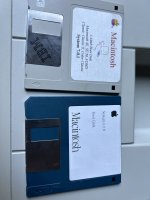Arlo
Member
Hello, I recently picked up a Macintosh SE FDHD and it is having trouble booting from both the floppy drive and hard drive. When it tries to boot from the included system 7.0.1 boot disk it will give me a happy mac face and then think for a moment before spitting out the disk! Any info would be great!

